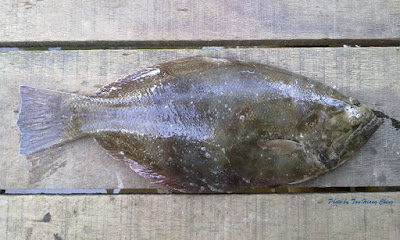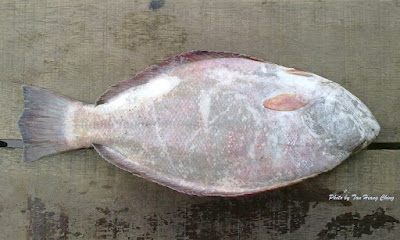Halibuts
Halibuts and turbots are the common names for the members of the Psettodidae family. The family members can have both eyes on the left side or right side of their head. They can be recognized by having their upper eye on dorsal edge of head and their dorsal fin origin well behind their upper eye. There are spines in dorsal and pelvic fins.
Members of the Psettodidae are found in the West Africa and Indo-West Pacific waters. They inhabit shallow marine waters on mud and sand bottoms near to shore. They often swim in an upright position and feed mostly on fishes.
There is only one genus with 3 species worldwide.
Members of the Psettodidae are found in the West Africa and Indo-West Pacific waters. They inhabit shallow marine waters on mud and sand bottoms near to shore. They often swim in an upright position and feed mostly on fishes.
There is only one genus with 3 species worldwide.
Scientific Name: Psettodes erumei (Bloch and Schneider, 1801)
English Name: Indian Halibut, Indian Spiny Turbot
Chinese Name | 鱼类中文名: 斑鮃 (Bān píng), 大比目鱼 (Dà bǐmùyú), 偏口鱼 (Piān kǒu yú), 右口鱼 (Yòu kǒu yú), 多宝鱼 (Duō bǎo yú)
Malay Name | Nama Melayu Malaysia: Ikan Sebelah, Sisa Nabi, Togok
Thai Name | ชื่อสามัญภาษาไทย: ปลาซีกเดียว (Plā sīk deīyw), ปลาจักรผาน (Plā cạkr p̄hān)
Main Identification Features: Eyes can be on right or left side of head. Dorsal fin with spinous rays. Dorsal-fin origin behind upper eye. Dorsal and anal fins not joined to caudal fin. Supramaxillary bone well developed. Jaws with large canine teeth. Lateral line almost straight.
Size: Maximum total length about 64 cm, most commonly between 20 and 40 cm.
Habitat and Ecology: Demersal on soft bottoms, to 100 m depth, but usually at 20 to 50 m depth. Usually bury itself deeply in the substrate during the day, but out hunting at night. Feeds mainly on fishes.


English Name: Indian Halibut, Indian Spiny Turbot
Chinese Name | 鱼类中文名: 斑鮃 (Bān píng), 大比目鱼 (Dà bǐmùyú), 偏口鱼 (Piān kǒu yú), 右口鱼 (Yòu kǒu yú), 多宝鱼 (Duō bǎo yú)
Malay Name | Nama Melayu Malaysia: Ikan Sebelah, Sisa Nabi, Togok
Thai Name | ชื่อสามัญภาษาไทย: ปลาซีกเดียว (Plā sīk deīyw), ปลาจักรผาน (Plā cạkr p̄hān)
Main Identification Features: Eyes can be on right or left side of head. Dorsal fin with spinous rays. Dorsal-fin origin behind upper eye. Dorsal and anal fins not joined to caudal fin. Supramaxillary bone well developed. Jaws with large canine teeth. Lateral line almost straight.
Size: Maximum total length about 64 cm, most commonly between 20 and 40 cm.
Habitat and Ecology: Demersal on soft bottoms, to 100 m depth, but usually at 20 to 50 m depth. Usually bury itself deeply in the substrate during the day, but out hunting at night. Feeds mainly on fishes.

